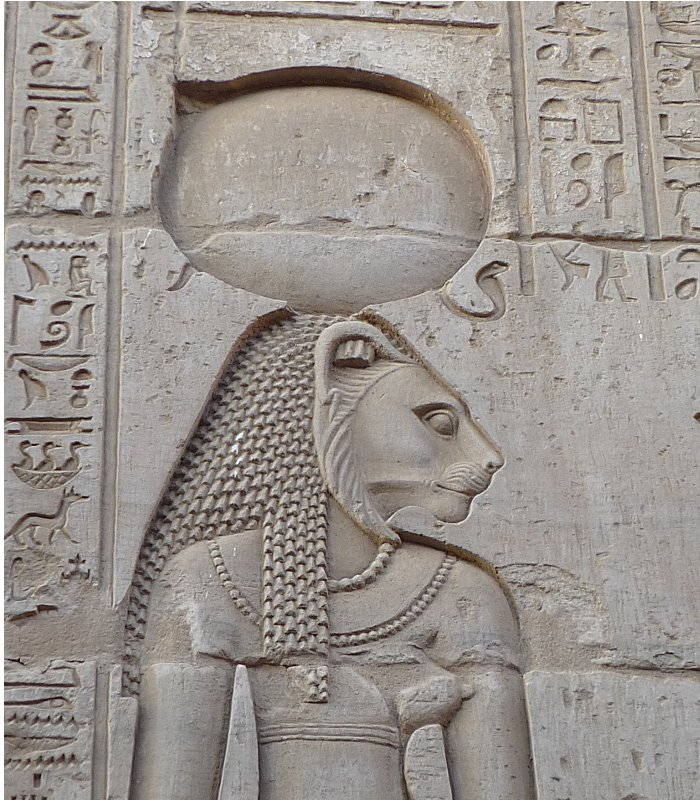Fearsome Sekhmet: Lion-Headed Egyptian Goddess And Sister Of Ptah
A. Sutherland - AncientPages.com - Known in ancient Egypt as Sekhmet, she was frequently portrayed with a lion head surmounted by a uraeus and a solar disk.
Black granite statue of Goddess Sekhmet excavated in Thebes in Ramesseum 1405-1367 BCE (Late 18th_Dynasty). Egypt Penn Museum. Image credit: Mary Harrsch - CC BY-SA 4.0
Like many other Egyptian goddesses, Sekhmet had two contradictory aspects to her complex personality.
As the lion-headed goddess, the fearsome Sekhmet was destructive and dangerous, perfectly conforming to her name, which means "powerful" or "the female powerful one."
But this remarkable deity was also known to have a healing and protective role.
Sekhmet - the sister of Ptah, to whom she eventually got married, was believed to be the daughter of the sun god Ra and one of the most important manifestations of the "Eye" of Ra.
According to a myth, when Ra became old, he learned that humans began plotting against him, so he decided to send the fearsome Sekhmet to punish them by breathing fire.
Sekhmet was a weapon of vengeance, created from the fire in Ra's eye, and the purpose of this creation was only one: the destruction of those who disobeyed Re. As the goddess of healing, Sekhmet had the power to ward off diseases; she was even called "Sekhmet, mistress of life."
This aspect of Sekhmet's personality was prevalent among many Egyptian kings who considered her a powerful military patroness and a symbol of their strength in the battles they fought.
Wall relief of Sekhmet, Kom Ombo Temple, Egypt. Image credit: I, Rémih - CC BY-SA 3.0
Sekhmet was their spirit, present with them everywhere like the hot winds from the desert, which were said to be the "breath of Sekhmet."
Queens, priests, priestesses, and healers called her. Her power and strength were needed everywhere. Sekhmet was "The Incomparable One".
Her personality - often linked with other deities - was very complex. Some researchers suggest that the mysterious Sphinx represents Sekhmet, and many legends and myths say she was present at the time of the creation of our world.
Sekhmet was often closely related to Hathor, a woman with a bovine head, the goddess of love, and the deity of dance, music, and happiness, and linked with Mut, the great mother and queen of the gods and the Theban goddess.
She was known as the goddess with many names; she was, for example, "The Devouring One," "Warrior Goddess," "Lady of Jubilation," "The Beautiful Light," and "Protectress of the Divine Order," "The Beloved of Ptah," just to name a few.
Her main cult center was in Memphis, but she also had many temples in other locations across Egypt.
"It is believed that Amenhotep III (1390-1352) had 730 statues of Sekhmet erected in his mortuary temple in Western Thebes.," write Candace C. Kant and Anne Key in "Heart of the Sun: An Anthology in Exaltation of Sekhmet."
"It is thought that there was one seated and one standing Sekhmet for each day of the year, possibly to soothe Her or to invoke Her protection at the most unstable times of the day, sunrise and sunset…."
These impressive statues were carved from hard, black granite (diorite) and depict the powerful Sekhmet standing or sitting with a papyrus scepter. The rite of "appeasing Sekhmet" was performed by her priests to battle diseases and epidemics. At the same time, she feared that she might be harmed, especially since "the seven arrows of Sekhmet" were believed to bring troubles and bad fortune.
Many spells and small amulets were used for protection against her wrath.
Written by – A. Sutherland AncientPages.com Staff Writer
Updated on February 25, 2024
Copyright © AncientPages.com All rights reserved. This material may not be published, broadcast, rewritten or redistributed in whole or part without the express written permission of AncientPages.com
More From Ancient Pages
-
 1,400-Year-Old Iron Hammer And Nails Among Findings At Sanhedrin, Western Galilee’s Usha
Archaeology | Nov 6, 2019
1,400-Year-Old Iron Hammer And Nails Among Findings At Sanhedrin, Western Galilee’s Usha
Archaeology | Nov 6, 2019 -
 15,000-Year-Old Petroglyphs Discovered In The Gobi Desert May Be Evidence Ancient Turks Visited Mongolia – Expert Says
Archaeology | Apr 5, 2022
15,000-Year-Old Petroglyphs Discovered In The Gobi Desert May Be Evidence Ancient Turks Visited Mongolia – Expert Says
Archaeology | Apr 5, 2022 -
 Rare Discovery: Giant Stone Artifacts Found On Ice Age Site In Kent
Archaeology | Jul 6, 2023
Rare Discovery: Giant Stone Artifacts Found On Ice Age Site In Kent
Archaeology | Jul 6, 2023 -
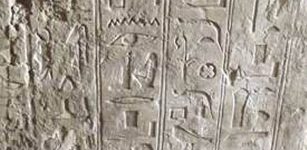 Tomb of the 26th dynasty vizier of Upper Egypt discovered in South Assassif, Luxor
Civilizations | Aug 31, 2015
Tomb of the 26th dynasty vizier of Upper Egypt discovered in South Assassif, Luxor
Civilizations | Aug 31, 2015 -
 Pitted Ware Culture – Neolithic Scandinavians Used Skin Boats To Trade And Travel Across Large Distances
Archaeology | Sep 11, 2024
Pitted Ware Culture – Neolithic Scandinavians Used Skin Boats To Trade And Travel Across Large Distances
Archaeology | Sep 11, 2024 -
 Why Was Alexander A Great Military Genius?
Ancient History Facts | Oct 23, 2018
Why Was Alexander A Great Military Genius?
Ancient History Facts | Oct 23, 2018 -
 World’s Oldest ‘Picture Story’ Found Deep Inside Indonesian Cave
Archaeology | Jul 8, 2024
World’s Oldest ‘Picture Story’ Found Deep Inside Indonesian Cave
Archaeology | Jul 8, 2024 -
 DNA Study Of Controversial Ancient North American Mummies, Including The Spirit Cave Mummy Opens An Extraordinary Chapter In Human History
Archaeology | Nov 15, 2018
DNA Study Of Controversial Ancient North American Mummies, Including The Spirit Cave Mummy Opens An Extraordinary Chapter In Human History
Archaeology | Nov 15, 2018 -
 Oklahoma’s Mysterious Hollow Hill – The Unexpected – Part 2
Ancient Mysteries | Jul 9, 2020
Oklahoma’s Mysterious Hollow Hill – The Unexpected – Part 2
Ancient Mysteries | Jul 9, 2020 -
 Prehistoric Humans Recycled Old Stone Tools To Preserve The Memory Of Their Ancestors
Archaeology | Mar 17, 2022
Prehistoric Humans Recycled Old Stone Tools To Preserve The Memory Of Their Ancestors
Archaeology | Mar 17, 2022 -
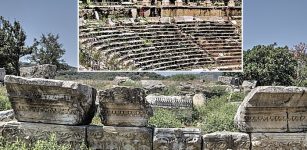 Gate of Zeus Temple Is A New Discovery In Western Turkey
Archaeology | Sep 30, 2021
Gate of Zeus Temple Is A New Discovery In Western Turkey
Archaeology | Sep 30, 2021 -
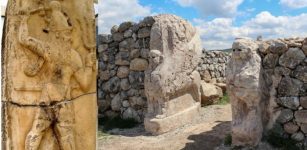 Code Of Nesilim: Ancient Laws Of The Hittites
Ancient History Facts | Jun 14, 2018
Code Of Nesilim: Ancient Laws Of The Hittites
Ancient History Facts | Jun 14, 2018 -
 A Stone Age Child Buried With Bird Feathers, Plant Fibers And Fur Investigated In Finland
Archaeology | Nov 2, 2022
A Stone Age Child Buried With Bird Feathers, Plant Fibers And Fur Investigated In Finland
Archaeology | Nov 2, 2022 -
 What Was Inti Raymi And Why Was It Celebrated By Inca?
Ancient History Facts | Dec 16, 2017
What Was Inti Raymi And Why Was It Celebrated By Inca?
Ancient History Facts | Dec 16, 2017 -
 Mystery Of The Coal On The Pirate Shipwreck Queen Anne’s Revenge Solved
Archaeology | Apr 13, 2023
Mystery Of The Coal On The Pirate Shipwreck Queen Anne’s Revenge Solved
Archaeology | Apr 13, 2023 -
 Sailor’s Strange Discovery Of An Unknown Ancient Underground World At The North Pole
Featured Stories | Feb 10, 2024
Sailor’s Strange Discovery Of An Unknown Ancient Underground World At The North Pole
Featured Stories | Feb 10, 2024 -
 Unravelling The Mystery Of The Yellow Emperor And His Connection To Regulus
Chinese Mythology | Sep 21, 2015
Unravelling The Mystery Of The Yellow Emperor And His Connection To Regulus
Chinese Mythology | Sep 21, 2015 -
 On This Day In History: Anne Boleyn, The Second Wife Of Henry VIII – Beheaded For Adultery, Treason And Incest – On May 19, 1536
News | May 19, 2016
On This Day In History: Anne Boleyn, The Second Wife Of Henry VIII – Beheaded For Adultery, Treason And Incest – On May 19, 1536
News | May 19, 2016 -
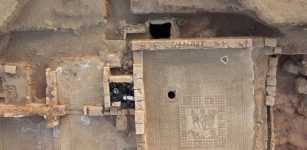 1,700-Year-Old Roman Villa, Beautiful Mosaics, Coins Unearthed In Ancient Roman Port Of Ptolemais
Archaeology | Jun 12, 2017
1,700-Year-Old Roman Villa, Beautiful Mosaics, Coins Unearthed In Ancient Roman Port Of Ptolemais
Archaeology | Jun 12, 2017 -
 Oldest case of leukemia found on 7,000-Year-old skeleton
News | Aug 23, 2015
Oldest case of leukemia found on 7,000-Year-old skeleton
News | Aug 23, 2015


